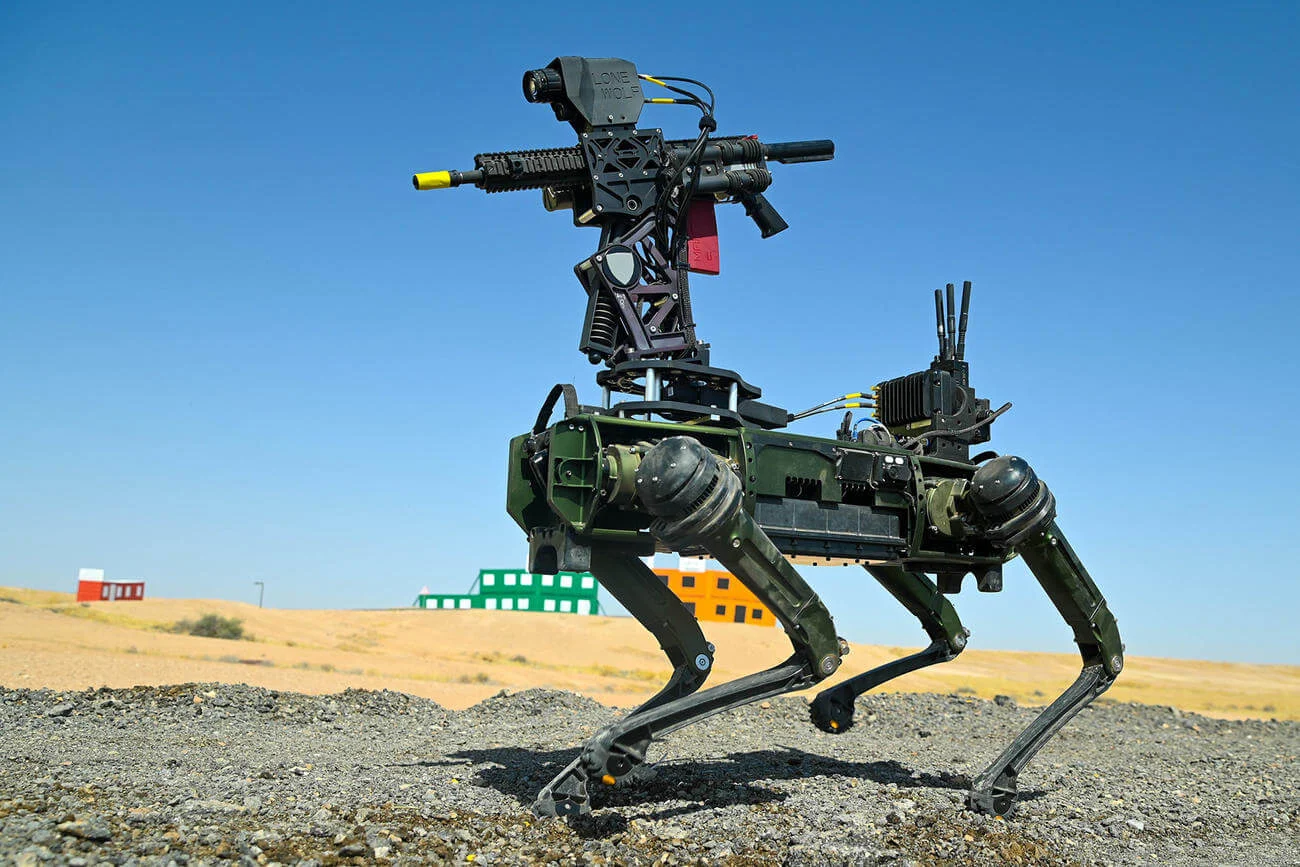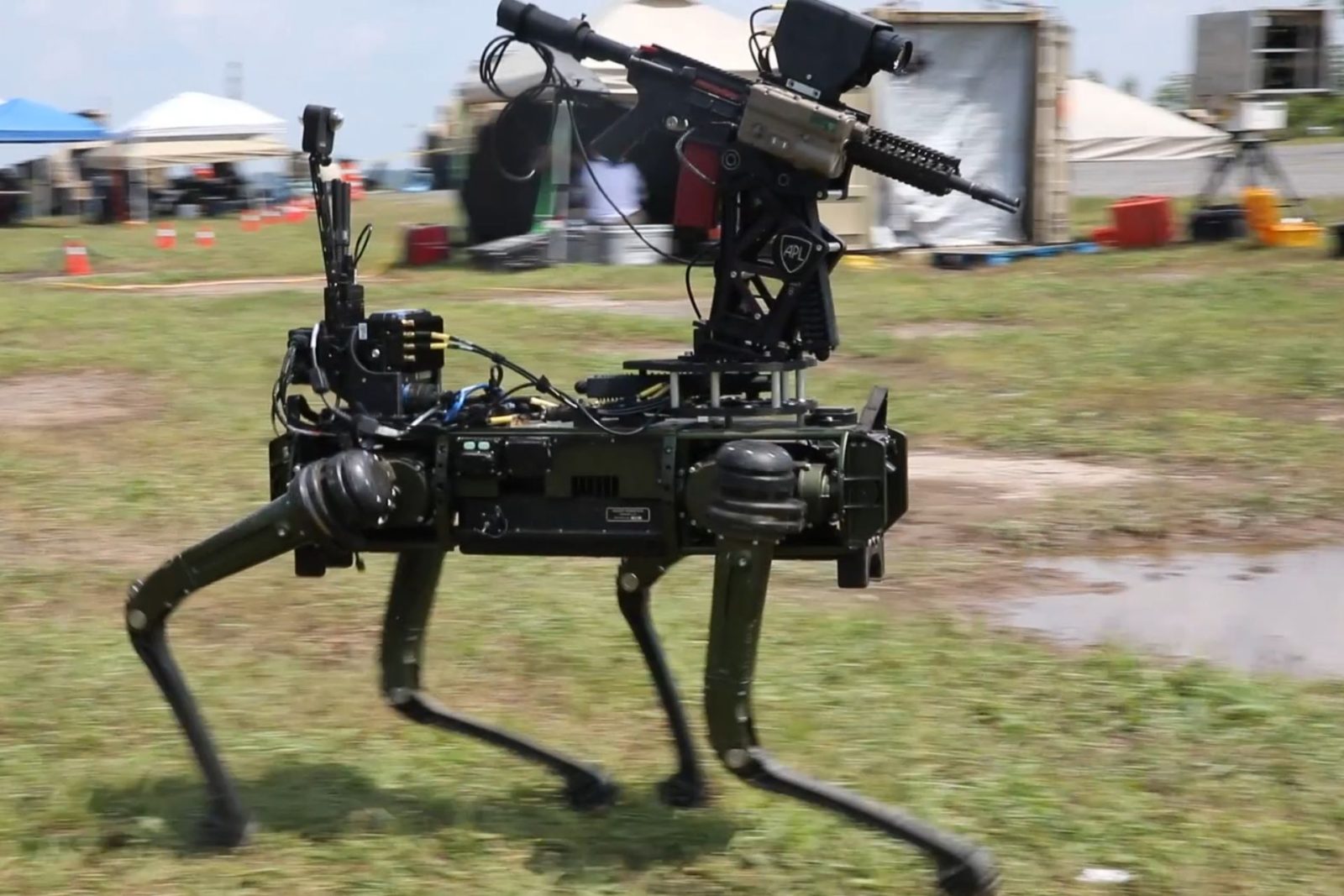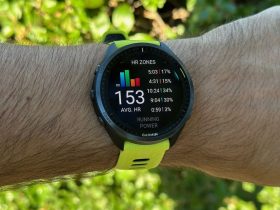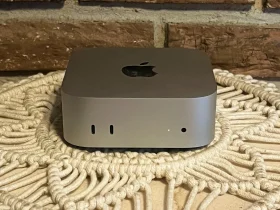The U.S. Army has sent an AI-powered “robot dog” to the Middle East for testing as part of its effort to develop new counter-drone capabilities. The robot dog, a Ghost Robotics Vision 60 Quadrupedal-Unmanned Ground Vehicle (Q-UGV), is armed with a rotating turret housing an AR-15/M16-pattern rifle.
This system was showcased during counter-unmanned aerial system (C-UAS) exercises at the Red Sands Integrated Experimentation Center in Saudi Arabia in mid-September. The turret, featuring an advanced electro-optical targeting system, is part of the Army’s broader initiative to neutralize drone threats in regions where unmanned aerial vehicles (UAVs) pose a growing danger.
Robot dogs have been incorporated into the Army’s operations in recent years, performing tasks such as explosive ordnance disposal, perimeter security, and intelligence gathering. These quadruped robots are designed to operate in environments that are challenging or unsafe for human soldiers, particularly in long-duration patrols where they can function autonomously without rest.
However, the Army is now experimenting with equipping these robots with weapon systems, following similar efforts by the Marine Corps, which tested robots with both remote weapon systems and anti-tank launchers. This evolving role for robot dogs marks a new step in integrating robotics with military combat functions.

The U.S. is not alone in exploring armed robot dogs. The Chinese People’s Liberation Army recently demonstrated its own armed robot dog, which carried an assault rifle during a training exercise in Cambodia. However, the U.S. military’s robot dog is being tested primarily for counter-drone operations.
Its AI system is intended to identify, track, and engage drones with greater accuracy than human soldiers using traditional firearms. This capability could be particularly valuable in combat environments where drones are used to gather intelligence or deliver explosives, presenting a unique challenge for soldiers on the ground.
In response to the increasing use of drones by adversaries, the Pentagon is exploring various counter-drone technologies that offer lower costs compared to traditional missile systems. These include cheaper missile interceptors like the Coyote, directed-energy weapons such as high-powered lasers, and autonomous systems like AI-powered robot guns.
These systems aim to reduce the cost-per-kill when targeting drones, providing a more cost-efficient alternative to expensive surface-to-air missiles. By integrating these autonomous systems into military operations, the Pentagon hopes to offer more persistent, effective protection against the rising tide of drone threats.
Despite the promising developments, the deployment of armed robot dogs in combat remains uncertain. The Army’s current experiments are part of a broader exploration of how human-machine integration can improve military operations in future conflicts. While these tests could eventually lead to the development of new combat strategies, they are still in the experimental phase.
The Army has emphasized that these efforts are about exploring possibilities rather than signaling immediate plans for large-scale adoption. The focus remains on understanding how these technologies can be integrated into future combat scenarios, especially as drone technology continues to evolve.







Leave a Reply